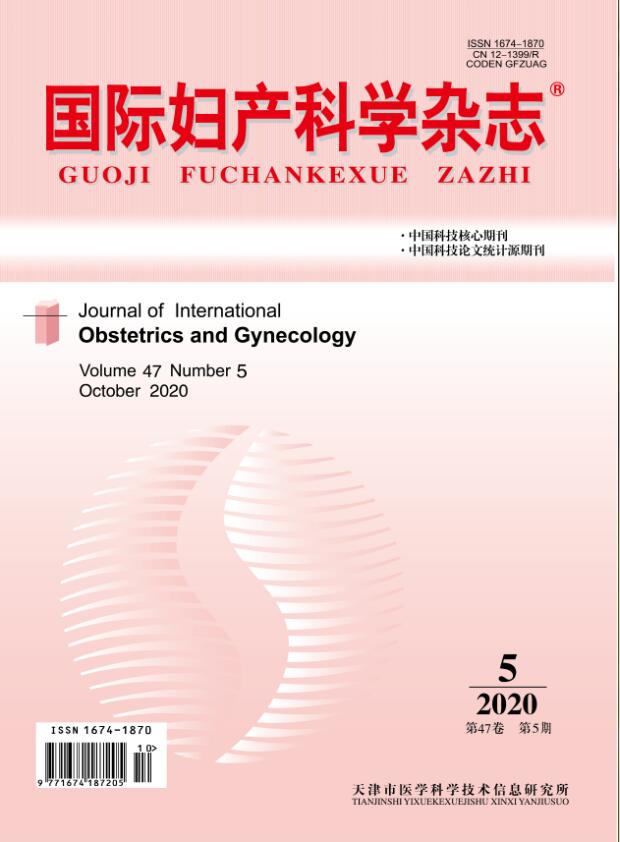|
|
The Inflammatory Pressure of Adenomyosis/Ovarian Heterotopic Cyst and Its Correlation with Clinical Characteristics
CHEN Dan-dan,LIU Hai-lun,JIANG Cai-xia,LU Yu-xia,QU Xiao-yan,CHENG Zhong-ping
2018, 45 (5):
587-593.
Objective:To investigate the expression of peripheral blood inflammatory index in adenomyosis/ovarian heterotopic cysts systematicly and their correlation with clinical features, providing evidences for anti-inflammatory treatment of adenomyosis/ovarian heterotopic cysts. Methods:58 patients with uterine adenomyosis, 37 patients with ovarian heterotopic cysts, 47 age-matched women without diagnosed endometriosis (control group) were enrolled in our study. Blood inflammatory cytokines and tumor-associated antigens were analyzed by real-time polymerase chain reaction and immunofluore scence technique respectively. Results:The serum expression of Neu, Neu%, NLR, IL-6, IL-8, CA199 and CA125 in adenomyosis group was significantly higher than that in the control group (P<0.05). The serum expression of HGB in adenomyosis group was significantly lower than that in the control group (Z=688.50, P=0.00). The serum expression of Neu, Neu%, NLR, IL-6, IL-8, TNF-α, CA199 and CA125 in ovary heterotopic cyst group was significantly higher than that in the control group (P<0.05). WBC and CA125 were obviously higher in adenomyosis moderate dysmenorrhea group than in the mild dysmenorrhea group (P<0.05). WBC, Neu, Neu%, NLR, IL-6 and IL-8 were significantly expressed in the severe dysmenorrhea group of adenomyosis compared with moderate dysmenorrhea group (P<0.05). WBC, Neu, Neu%, NLR, IL-6, IL-8 and CA125 were significantly expressed in the severe dysmenorrhea group of adenomyosis compared with mild dysmenorrhea group (P<0.05). The serum expression of HGB in the severe and mild dysmenorrhea group of adenomyosis was significantly lower than that in the mild dysmenorrhea group (P<0.05). WBC, Neu, Neu%, NLR, IL-6, IL-8, CA125 were clearly increased in adenomyosis hypermenorrhea group compared with normal menstruation group (P<0.05). IL-6 and IL-8 were significantly expressed in the severe dysmenorrhea group of ovary heterotopic cyst compared with mild and moderate ovary heterotopic cyst group (P<0.05). There was no significant correlation between tumor-associated antigenswere and peripheral blood inflammatory cytokines in adenomyosis/ovarian heterotopic cysts patients. Conclusions:Adenomyosis/ovarian heterotopic cysts was a state of systemic inflammatory stress and these indicators were associated with clinical features closely. The results are beneficial to provid a basis for anti-inflammatory treatment of adenomyosis/ovarian heterotopic cysts.
Related Articles |
Metrics
|

